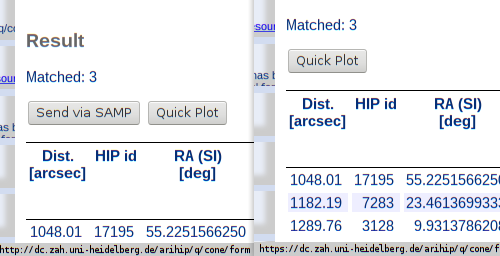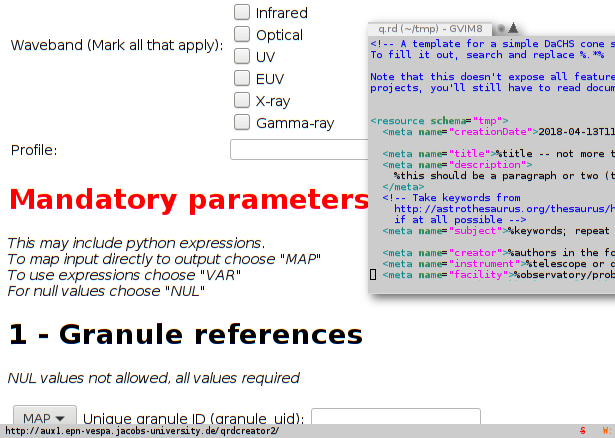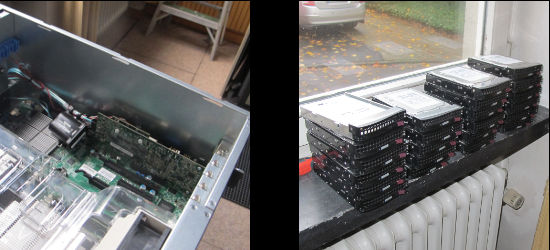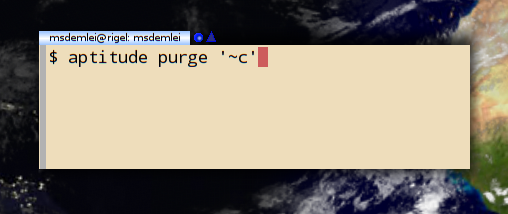A New View on SSAP in DaCHS
When I started working on the VO in 2007, my collagues in Garching already had a software that implemented major parts of the simple spectral access protocol (SSAP) that was being developed back then. It would publish spectra in the FITS format by just blindly dumping all header cards into a database table and then defining a view over that “raw” metadata table to make the whole thing match SSAP's expectations for how the output table should look like. Sometimes you could just map through a header to an SSA column, sometimes you would just convert a unit, sometimes you would have to write a fairly complex SQL expressions combining multiple fields.
Back then, I didn't like it – why have two things (a table and a view) that can break when one (just a table in SSA's format) would do, too? Also, SSAP has about 50 metadata fields, but lets you put constant values into VOTable PARAMs, which seemed a very reasonable way to attain more compact responses. So, when DaCHS grew SSAP support, I defined a mixin (essentially, a configurable interface definition) that let operators define SSA tables and their constant parameters in a fairly simple fashion and directly produced a table you could base your SSAP service on.
That made assumptions about which pieces of metadata are constant and which are not; for instance, the original mixin (“hcd” for “homogeneous collection”) assumed all spectra in a data collection came from the same instrument and had the same resolution and (what was I thinking?) SNR. Unsurprisingly, that broke fairly soon. So, I added a second mixin (“mixc”) for when different instruments or codes produced the data.
But even that was headache, at the latest when I started making time series services using SSAP. And I had to fix a few bugs in the mixins themselves in the meantime, which mostly required re-imports of the data in that design. Such re-imports are non-trivial when you have millions of spectra, and they need to happen at software upgrade time or the services would break with the upgrade. Ouch.
It was about mid-2018 when it dawned on me that sometimes it's better to have two things that can break even if one would do, after all. Specifically, if fixing the one thing is expensive, it's an excellent idea to put a facade on top of it that's cheap to change and can already be used to repair most deficiencies. Why re-build the house if a paint job does the trick?
As to having more compact query responses when you stuff metadata that's constant in all the rows into VOTable PARAMS – well, in the age of web pages pulling in a megabyte of javascript and two megabytes of images to display five lines of text, I've become a bit cavalier in that department. Sure, the average row may have grown by a factor of three, but we're still talking only a few megabyte even with large responses. To me, these extra bytes seem a fair price to pay for the increased flexibility and overall more straightforward architecture.
So, I've now come up with a view-based solution in DaCHS, too: the //ssap#view mixin. This is a bit less radical than the Garching software of 2007, as it doesn't dump raw headers but instead lets you do the primary transformations in the RD. But it no longer constrains what pieces of metadata should be constant and which may vary between spectra, and it uses the same names for the same pieces of metadata throughout (which also is a step forward over the old SSAP mixins).
With this, DaCHS operators should no longer use the hcd and mixc mixins for new services. The new technique is already reflected the respective tutorial chapter, and the SSAP template (you're using dachs start, aren't you?) now uses it, too.
If you have a spectra publishing project in your pipeline, this would be the perfect time to upgrade to the DaCHS 1.2.4 beta, which has the new mixin. It would be great if we could iron out remaining wrinkles before the next release makes changes a load on my conscience.
As to migrating existing SSAP services: Well, it would be great if I could drop the old mixins in a couple of years, as they cause quite a bit of uglyness in DaCHS's built-in //ssap RD. But the migration regrettably isn't straightforward, so you may want to wait a bit before embarking on that journey (I'll be happy to help, though).

![[RSS]](../theme/image/rss.png)



